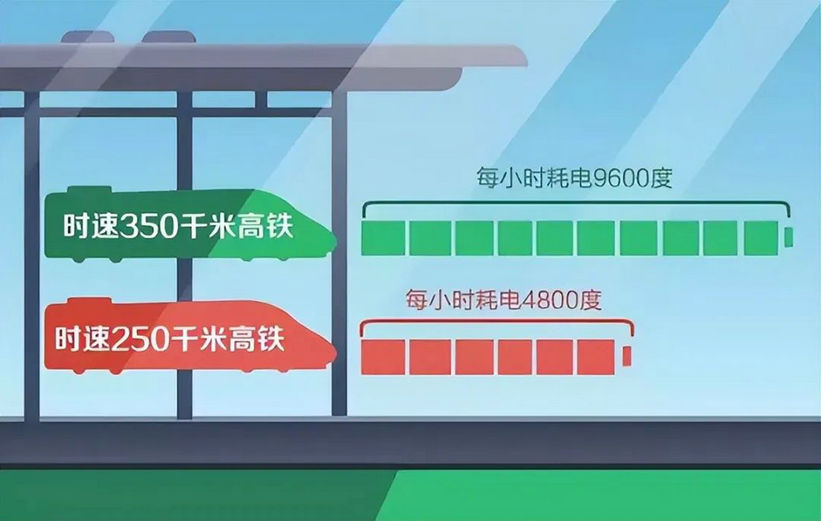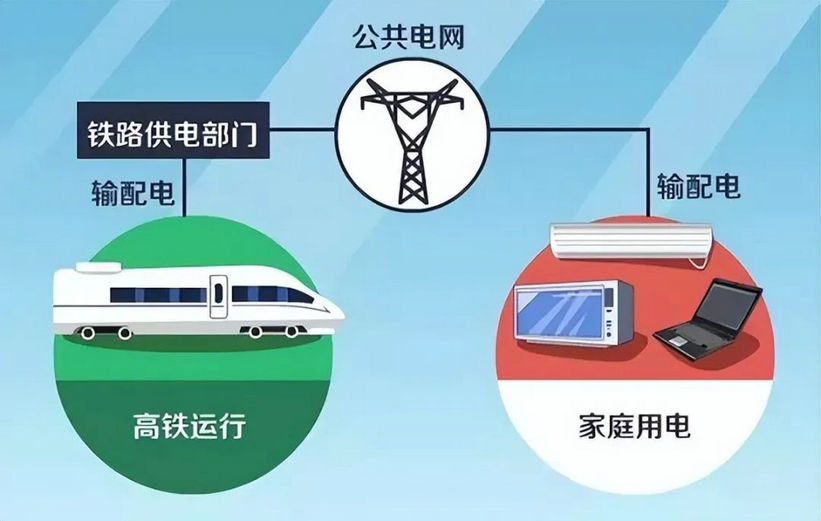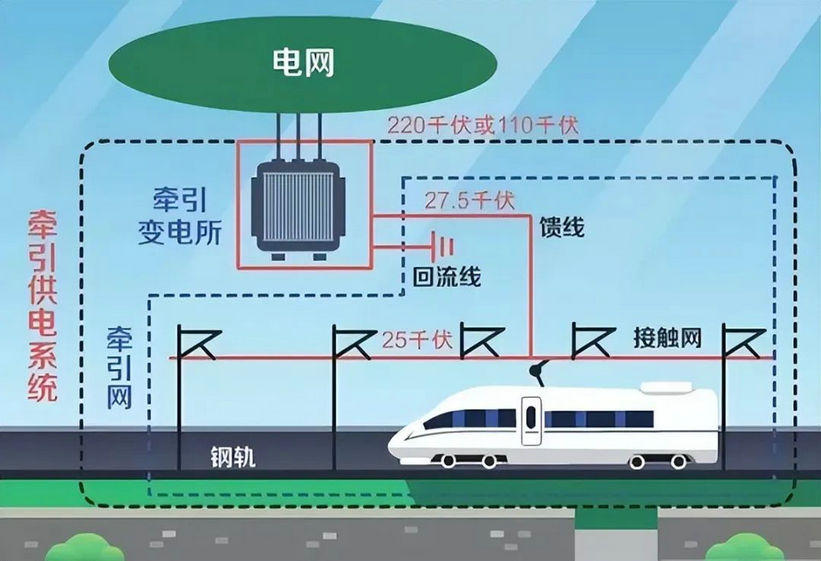| What is the electricity used for high-speed railway? |
| Release time:2023-02-16 09:07:18| Viewed: |
At present, high-speed rail is undoubtedly one of the most convenient and fast modes of travel for you.
Relevant data show that the high-speed railway with a speed of 350 kilometers per hour consumes 9600 kilowatt-hours per hour, and the high-speed railway with a speed of 250 kilometers per hour consumes 4800 kilowatt-hours per hour. A 250km/h high-speed railway from Beijing to Nanjing takes 4 hours and consumes nearly 20000 kilowatt-hours of electricity! The air conditioner that can supply a certain "power as low as one degree per night" for 55 years.
High-speed railway is not only faster than ordinary trains, but also has a charging socket in front of each row of seats.
So here comes the question - where does the power of high-speed railway come from? What should I do if there is a power failure on the high-speed railway?
01 Where does the power of high-speed railway come from?
First of all, so much electricity comes from our large power grid. Whether it is supplied by high-speed railway or ordinary residents, electricity is supplied by the public power grid. High-speed railway is a special customer of power supply companies; The power supply for ordinary residents is transmitted and distributed by the power supply company.
For high-speed railway, the power plant will be sent to the traction substation through the transmission line (here is the railway asset, operated by the relevant railway departments) after power generation, and then the power will be supplied to the railway through the catenary.
The following picture will help you understand:
The traction power supply system of EMU generally includes: traction substation (station), contact network and return circuit. It sounds professional
But don't worry
Look at the picture ↓↓↓
02 What's the difference in the electricity used for high-speed railway?
If it is different, it is reflected in the voltage first. The voltage used for high-speed railway is not found in the power supply sequence of the grid. Secondly, the AC power in the grid is three-phase, while the power of high-speed railway is single-phase!
In China's electrified railways, the power frequency (50 Hz) 25 (27.5) kV single-phase AC is used. This single-phase, 25 (27.5) kV AC is converted from the power transmitted by the power grid by the traction substation.
03 Does the high-speed railway always have power supply during operation?
High-speed railway, bullet train, etc. are not always connected to the power grid in the process of traveling. They often pass through a section of no electricity section (between the traction substation and the power supply arm, called "electric phase separation"), about 100 meters. When passing through this section, the train has no electricity, and generally slides through this section with the help of inertia. Because this section is very short, there is little feeling when taking the train.
04 What should I do if the high-speed railway has no electricity
Each EMU also has its own battery, which can provide electric energy for pantograph operation when the train starts, and can also be used as emergency standby power supply for safety and auxiliary electrical system in case of power failure of high-speed railway.
In recent years, there have been some power outages caused by external factors such as weather.
First of all, we must keep calm. When the power is cut off, most of the systems in the vehicle cannot operate. The windows of domestic high-speed trains and bullet trains are of airtight design, and the doors will not open until last resort.
Secondly, drinking water is reasonable. In a sultry environment, people expel heat through sweat. Dehydration may occur when the water supply is insufficient.
Finally, adjust the mentality, maintain order, calmly deal with sudden difficulties, and wait for the restoration of power supply. |






